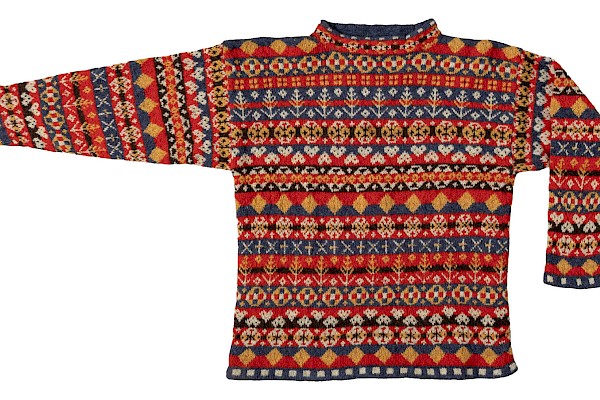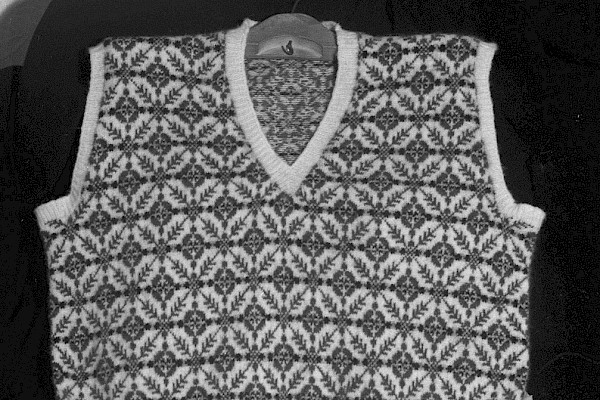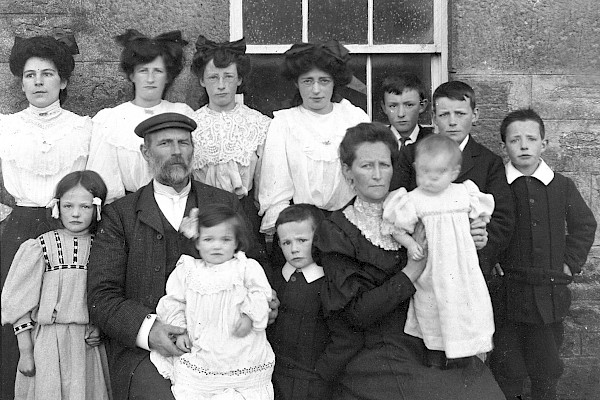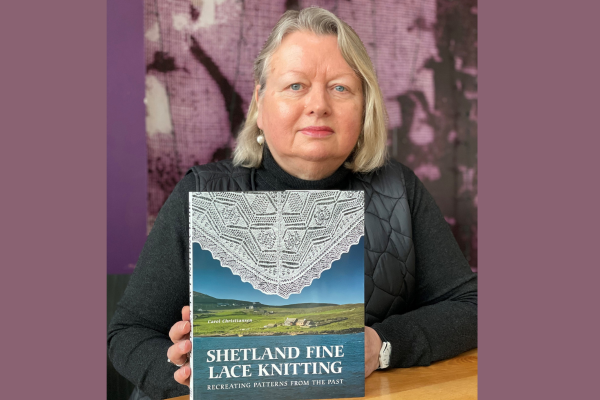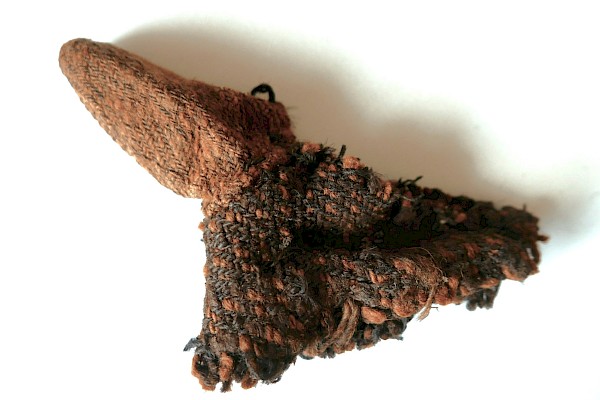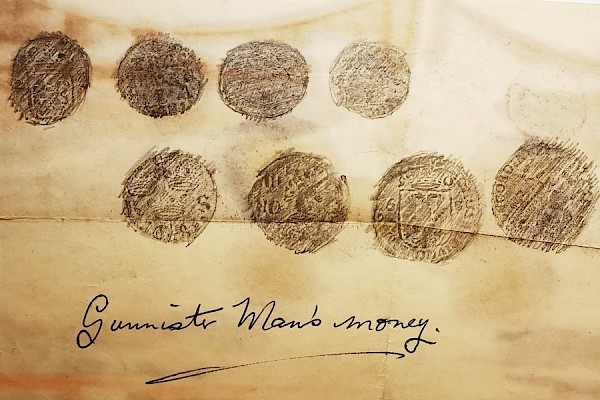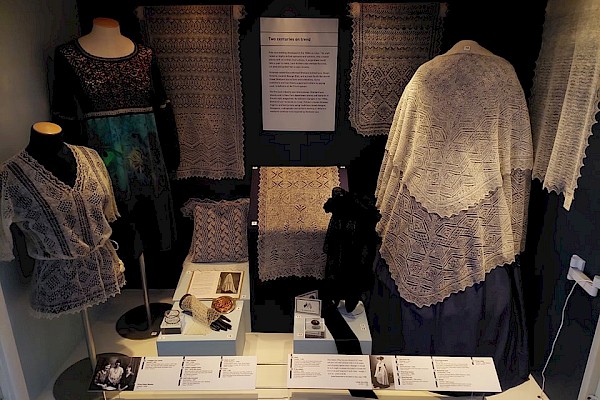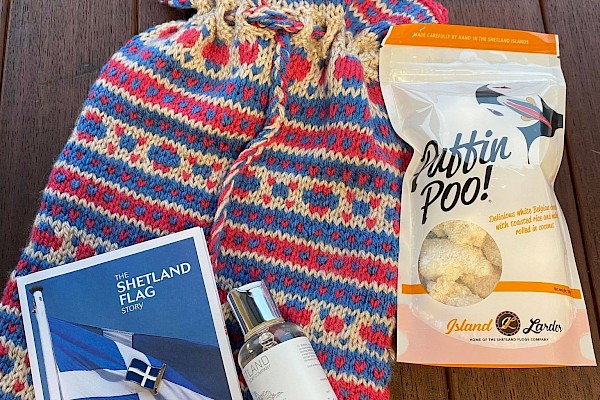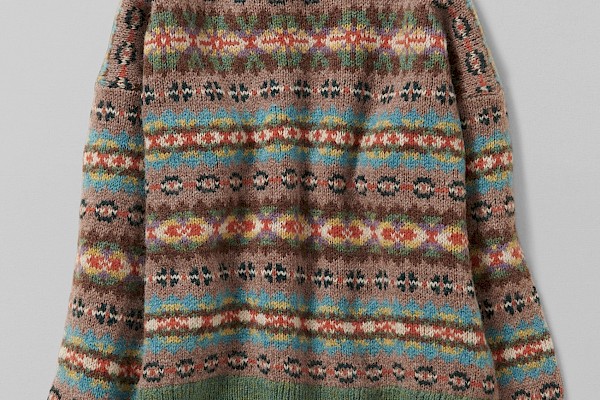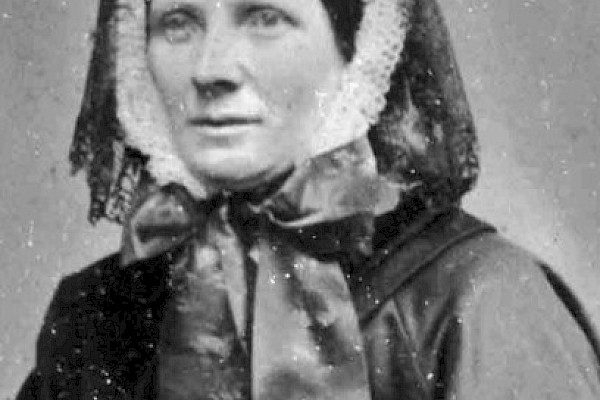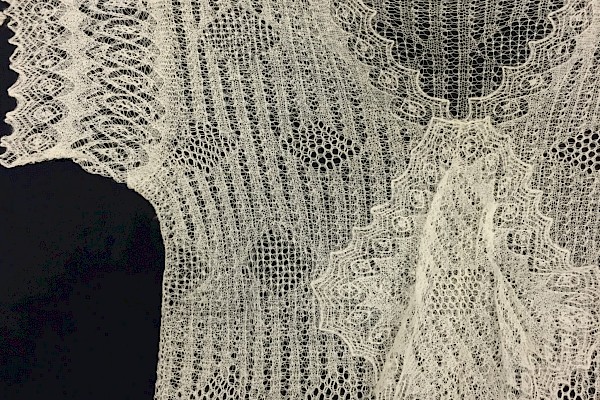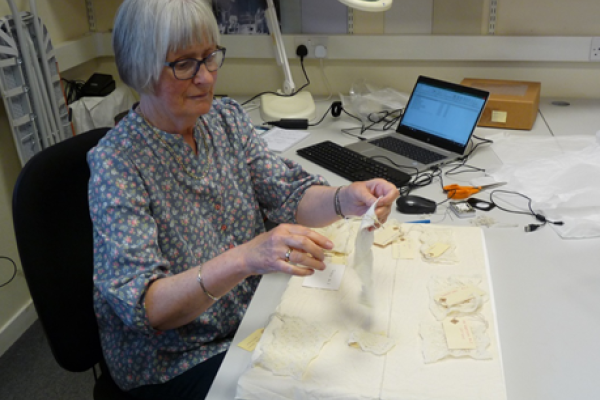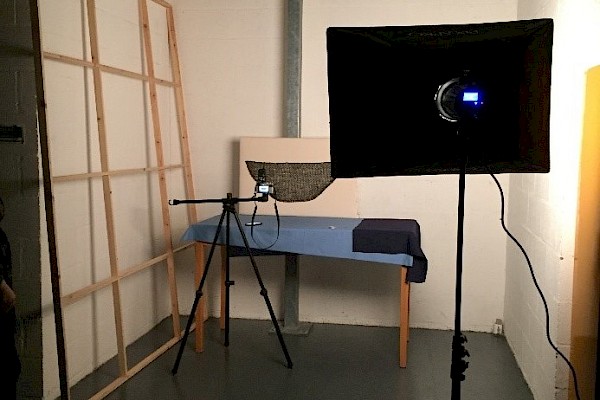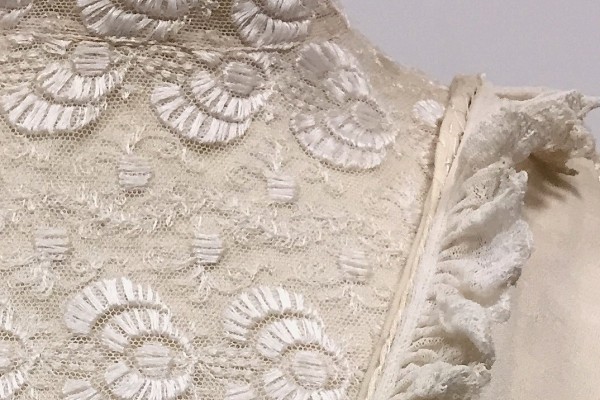The Burnous
One of the most dramatic pieces of lace knitting in our collection is an oddly-shaped red and white striped flat textile (TEX 7780). Initially purchased for the collection in 1978, this ‘Ladies Dress Shawl’ was reputedly commissioned by Edward Standen and Co., London importer of Shetland lace knitting, for display at the Great Exhibition in 1851. Although the company exhibited a white Shetland shawl and a veil at the Great Exhibition, there is no mention of such an extraordinary red and white lace garment, from Standen or any other exhibitor in the 1851 exhibition catalogue.
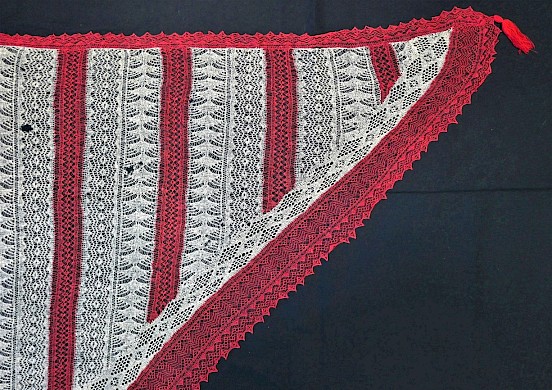
One side of the burnous. When worn, this half drapes the right front of the wearer.
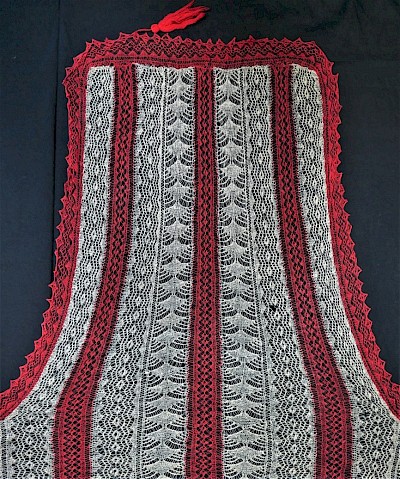
Down the years the item became known as a veil because of its shape and square head piece. Early christening veils were also triangular, with a rounded section along the top edge where the infant’s head was placed. When the new Shetland Museum and Archives opened in 2007, the garment was placed on permanent display as a veil, with the head piece draped over the mannequin’s head. It never looked right – too large, very long, with the square head piece looking odd and misplaced.
During her PhD research into the Shetland fine lace industry, Dr Roslyn Chapman told me she thought the red and white veil was a burnous. After investigating this type of garment, I wholeheartedly agreed with her. A burnous is a North African cloak with fronts that often end as points. It has a simple hood that drapes down the back. It is often made in striped fabric and tassels decorate the hood and front. This was a much closer description of our so-called veil.
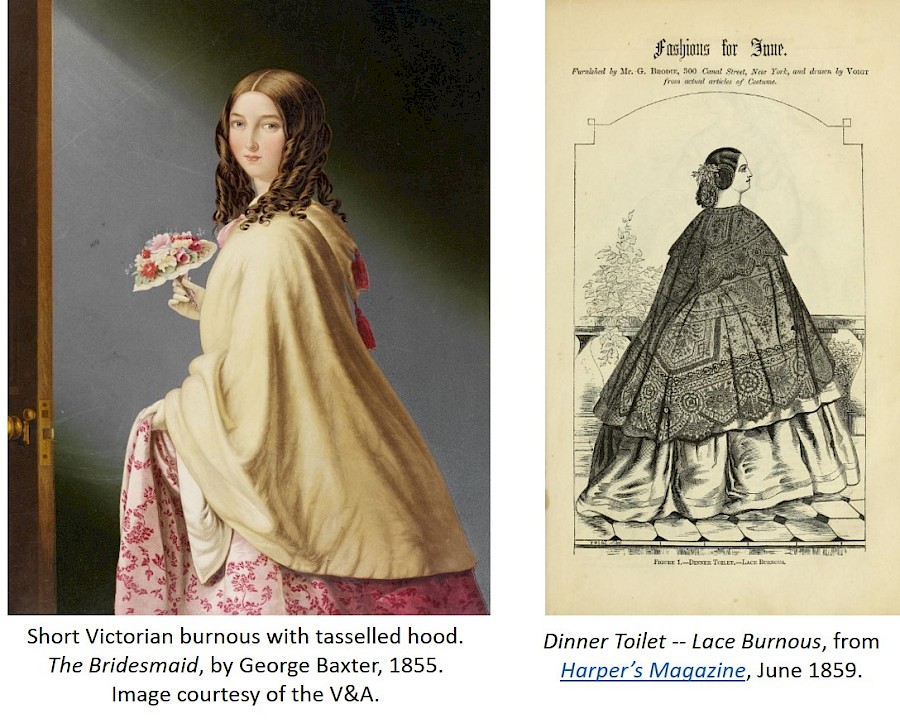 Upper class Victorian women wore an astonishing and ever-changing array of clothing and accessories. North African and the Middle Eastern costume influenced Western fashion, including the burnous. Cloaks were useful outer garments for the exceptionally large skirted dresses of the mid-19th century. Victorian burnous were made from silk velvet or cashmere, sometimes embroidered, or made from lace. The draping hood at the back and decorative silk tassels provided a hint of exoticism. Burnous were fashionable from the 1850s to the 1870s.
Upper class Victorian women wore an astonishing and ever-changing array of clothing and accessories. North African and the Middle Eastern costume influenced Western fashion, including the burnous. Cloaks were useful outer garments for the exceptionally large skirted dresses of the mid-19th century. Victorian burnous were made from silk velvet or cashmere, sometimes embroidered, or made from lace. The draping hood at the back and decorative silk tassels provided a hint of exoticism. Burnous were fashionable from the 1850s to the 1870s.
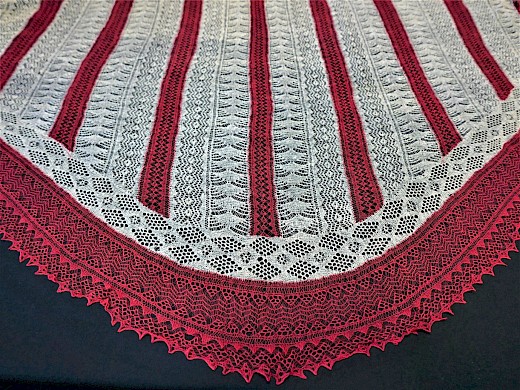 Our project’s Craft Specialists, Anne Eunson and Kathleen Anderson, have studied the burnous in detail and have determined the complex sequence of construction. The red lace edge and red half of the border were made first as a long strip. Using white yarn, stitches were picked up along the inner edge and the white half of the border was knit. The white vertical strips were begun from the live stitches of the border, beginning at the centre, leaving gaps for the red strips. The strips on either side of the centre section were begun using short rowing, to form the rounded shape along the bottom of the burnous. After looking closely at the joins between red and white strips, Kathleen and Anne have determined that all the white strips were begun before the red strips, which were joined to the white strips as they were knit. The head piece was simply a continuation of the centre strips, while the triangular shaping was achieved through shorter and shorter strips forming the wing shape on either side of the centre. The burnous was finished with a lace edge in red from wing point to wing point and around the head piece. Finally, four tassels in red wool were attached to each wing tip and one at each corner of the head piece.
Our project’s Craft Specialists, Anne Eunson and Kathleen Anderson, have studied the burnous in detail and have determined the complex sequence of construction. The red lace edge and red half of the border were made first as a long strip. Using white yarn, stitches were picked up along the inner edge and the white half of the border was knit. The white vertical strips were begun from the live stitches of the border, beginning at the centre, leaving gaps for the red strips. The strips on either side of the centre section were begun using short rowing, to form the rounded shape along the bottom of the burnous. After looking closely at the joins between red and white strips, Kathleen and Anne have determined that all the white strips were begun before the red strips, which were joined to the white strips as they were knit. The head piece was simply a continuation of the centre strips, while the triangular shaping was achieved through shorter and shorter strips forming the wing shape on either side of the centre. The burnous was finished with a lace edge in red from wing point to wing point and around the head piece. Finally, four tassels in red wool were attached to each wing tip and one at each corner of the head piece.
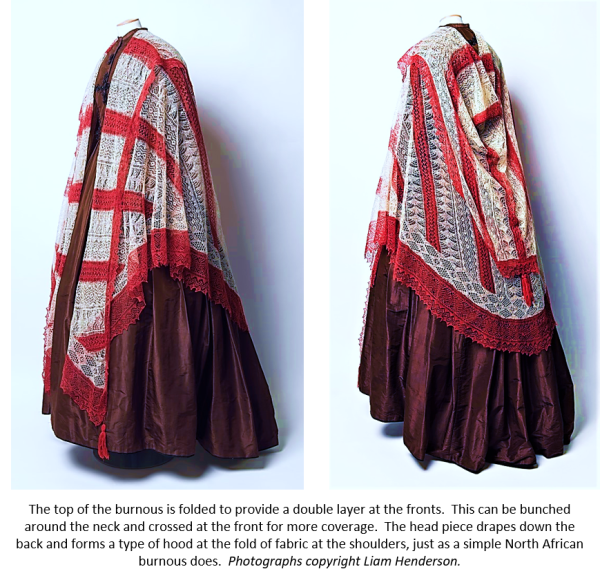
Was our red and white burnous made in Shetland? Merchants’ ledgers tell us that special orders for garments such as opera cloaks were made by Shetland lace knitters and burnous-style opera cloaks are illustrated in fashion literature of the day. If made for Edward Standen and Company, the garment may not have been intended for sale, but as a display model to entice customers and show what was possible from the lace knitters of Shetland.
